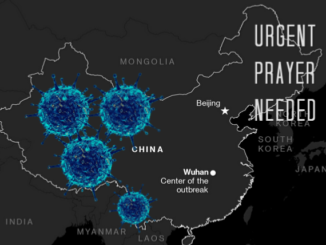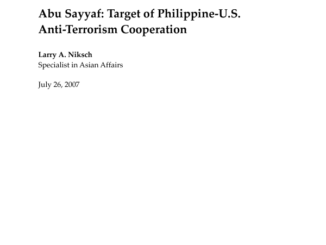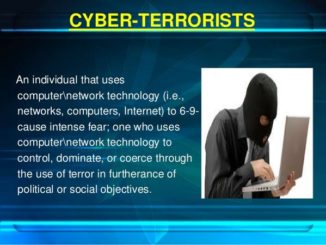
There has long been concern in South American security circles of transnational terrorism, particularly in the “frontier iron triangle” linking Brazil, Argentina, and Paraguay, the three countries where Al Qaeda appears to have established centers for terrorist training, youth conversion, and cross-border attacks within the continent.
In addition to identifying some 20 high-ranking locally based Al Qaeda terrorists, Brazilian authorities in 2011 pointed to the known activities of Hamas and Hezbollah in Latin America, organizations that also have a Latin American footprint. How can this be so? What would these predominantly MENA terrorist organizations hope to accomplish south of the Panama Canal?
It is an interesting question, and one worth exploring. The answer points to drugs, money, and weapons, another iron triangle that supports terrorism everywhere
We know of Al Qaeda interest in Latin America predominantly through the tracking of large financial transactions by central banks. There is no question that large quantities of cash have changed hands in the search for armaments supplied by Latin American manufacturers and stockpilers. It is much easier for Al Qaeda to deal with these illegal entities in South America than it is for more feared local groups, such as the FARC, to do so.
South America’s diverse nations are not usually regarded as major arms manufacturers and suppliers-but the facts do not support this. In a huge irony, Al Qaeda leaders have found that it is far easier to purchase hi-tech Israeli-manufactured weaponry in Latin America than it is to do so in Europe or Asia. The Israeli national military industry survives on exports. Through middlemen and Al Qaeda fronts, these weapons end up in the wrong hands. Private military and security organizations help facilitate such transactions, including, recently, reports of unmanned aerial vehicles sold to terrorists.
Reports of the first terror links between predominantly Latin America-based organizations (especially home-grown groups with local interests and objectives and no known ties to Al Qaeda) began to come to the surface in the years after the 9/11 horror in the United States. Such reports were suppressed to some extent amid concerns that they fueled anger and alienation of local communities of Arab extraction. Now they are becoming more widely disseminated. Recent concern has centered on a problem in South America that is clearly home grown: Drug trafficking.
What is the role of the known drug cartels in Latin America in relation to international terrorism generally and Al Qaeda in particular?
There is persuasive evidence of strengthening ties between African Al Qaeda franchises in North Africa and Latin American drug lords and their vast global business networks. Latin American cocaine flights are often routed through Africa because customs issues are more relaxed there, for further transshipment to Europe and America. Al Qaeda members have been tracked on return flights back to South America and some Al Qaeda leaders view South America has a place to relax and recuperate.
One regular flight is known as the “Coca Plane,” a non-commercial flight in which drug traffickers transport tons of refined cocaine to Gao State in Nigeria. This flight runs on an almost predictable schedule. British crime authorities confirmed in 2013 that Al Qaeda has used drug profits to finance terror activities in Great Britain and France, using weapons stolen in Libya as the mechanism to access the drugs.
Al Qaeda, in effect, has become arms supplier to the cocaine cartels. It takes these drug funds to further pursue terror plots in Europe and the UK. British journalists have reported that Britain’s MI6 along with the criminal intelligence agency known as SOCA conducted a joint task force to look into Al Qaeda’s links to drug cartels in Latin America and terror franchises such as Al Shabab and Ansar-al-Sharia in North Africa. What they found startled them.
Two Colombian nationals, including a high-ranking member of the left-wing terror organization FARC, were brought down in a raid conducted by the US Drug Enforcement Administration (DEA). The Colombians were charged with selling significant tonnage of cocaine to Al Qaeda’s North African subsidiaries, including Al Qaeda in the Islamic Maghreb (AQIM). The African terror groups used cash generated from sale of Muammar al-Qaddafi’s looted weapons as a rich source of continuing currency.
These drug trails and weapons trails have been hard to follow, but once discerned they have emerged as regular trade routes with predictable schedules. Cocaine shipped to North Africa and transferred across the Mediterranean to the south of France, long a point of supply for Europe’s drug distribution networks, can be traced to major UK retail drug dealers as final point of sale to consumers.
From time to time suspects have been detained by drug authorities. One conspiracy came to light as the result of a sting operation in which intermediaries in West Africa thought they were dealing directly with senior leadership of the FARC. The got the initials wrong: They were really talking to the FBI. These criminals promised to supply ground-to-air Stinger missiles along with reliable AK-47 assault rifles left over from old USSR stockpiles, and a special shipment of grenade launchers, in exchange for four tons of cocaine with an estimated street value of $310 million.
The bottom line is that Al Qaeda of the Islamic Maghreb has been strengthening its ties and financial links with cocaine suppliers in South America, collecting “travel taxes” so that drug lords are guaranteed safe passage across the Algerian deserts along with the multi-ton consignments of white powder. This out-of-the-way travel evades the sophisticated traps laid for the drug traffickers in Europe and America. Drugs shipped from Belgium or the Netherlands in intermodal shipping containers labeled “furniture” or “machine parts” are far more likely to slip through the net than drugs shipped directly by plane from known drug sources like Colombia. Far better to take a roundabout route and evade detection.
UK sources within that nation’s intelligence agencies recently admitted privately that evidence has emerged showing conclusively that Al Qaeda itself has become a supplier of cocaine into Europe, becoming in effect a wholesale buyer of the drug in Latin America and using its own European networks to double also as a retail drug-selling operation. So Al Qaeda marks up cocaine and keeps a profit to further fund its other “businesses.”
French anti-crime and anti-terror authorities are particularly concerned about the Algeria connection and the fact that France has become the main point of entry for drugs shipped from Latin America via North Africa, and then across the Med into the Riviera, which is poorly policed.
And-of course-US authorities in the Department of Homeland Security and the Department of State, along with the CIA and the FBI, are very interested in these developments and following them closely.
The evil triangle of South American drugs, North African terrorists, and illegal arms trafficking is a very powerful one. We will see more about these transactions.
Proudly WWW.PONIREVO.COM



